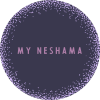Feeling Tension Instead of Peace This Elul?
This morning, I sat at my kitchen table with a cup of coffee, reflecting on the new month of Elul. A tight knot formed in my chest, not from work stress or a looming deadline, but from a quiet worry about how to show up better this month.
Teshuva (sometimes called “repentance,” literally “return”) is more than saying sorry or listing mistakes. It’s the soul’s homecoming to its truest self and to the Divine spark within. And it isn’t just spiritual work. It is also somatic. That chest knot wasn’t stubborn resistance but fear; not laziness, but my body’s way of protecting itself.
When Your Body Says No
Some of us have felt:
• Unease when we try to sit and reflect
• A rush to skip moments of stillness
• Restlessness or drifting thoughts as we slow down
In Torah terms, we call these walls meitzarim, the “narrow straits” that limit your soul’s light. Just as Egypt trapped our ancestors with physical barriers, these inner boundaries trap our thoughts and cut us off from G-d’s presence. Through Teshuva meditation and nervous system regulation, we gently break down those walls so our Divine spark can shine freely.

Why Embodiment Matters
Elul isn’t only about words on a page. It’s about feeling your heart open. Embodied Elul practices tap directly into your body’s wisdom, using breathwork and gentle movement to:
– Calm the fight-or-flight response and build true nervous system regulation
– Anchor your awareness in the present, so Teshuva meditation shifts from just a concept to a lived experience
Science shows that simple breath patterns (like a 4-in, 6-out count) activate the vagus nerve, lowering cortisol and inviting clarity. When your body feels safe, your mind can follow, turning each moment of reflection into a doorway for genuine return.
3 Simple Embodied Elul Practices
1. Breathe and Create Space
Sit upright with your feet flat on the floor. Inhale gently for four counts, exhale for six. Repeat ten times. Let each exhale soften the tightness in your chest.
2. Name and Explore
Immediately after your breath practice, jot down the first word that comes to mind; an emotion or a sensation. Then ask, “What does this part of me need right now?” Write a short, compassionate response without judging or editing.
3. Stay Curious and Receive
Close your eyes and notice any shift: a slight release, a color, a memory, warmth. If nothing changes, simply remain curious for another 30 seconds. This gentle presence lets your body know it’s safe to soften.
Embodying Teshuva: A Ritual for Connection and Light
Next time I notice that inner resistance (fluttering heart, tight throat, restless mind) I’ll try to pause and breathe. Then I can name the sensation (unease, restlessness, hesitation) and hold it with curiosity. Next, I’ll watch for small shifts: a calmer thought, a moment of clarity.
These signals aren’t dramatic breakthroughs; they’re real, day-to-day markers of Teshuva practice. Each pause and breath opens space for our Divine spark. When we shift from “What do I need?” to “What does Hashem need from me?”, we align your will with His and bring more light into the world.
Try this now: pause wherever you are, take three slow breaths, label what’s present without judgment, and stay with it for a few more seconds. Notice any hint of release. Share your “aha” moment in the comments section below or share with the tag #ElulEmbodiment.




